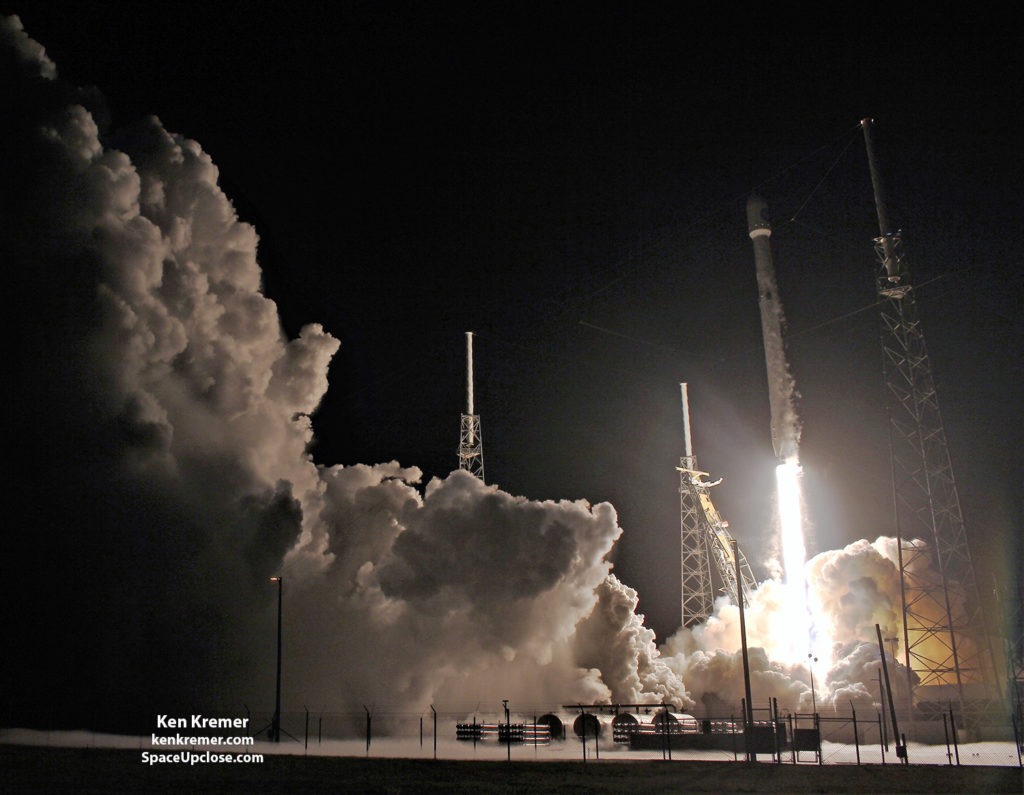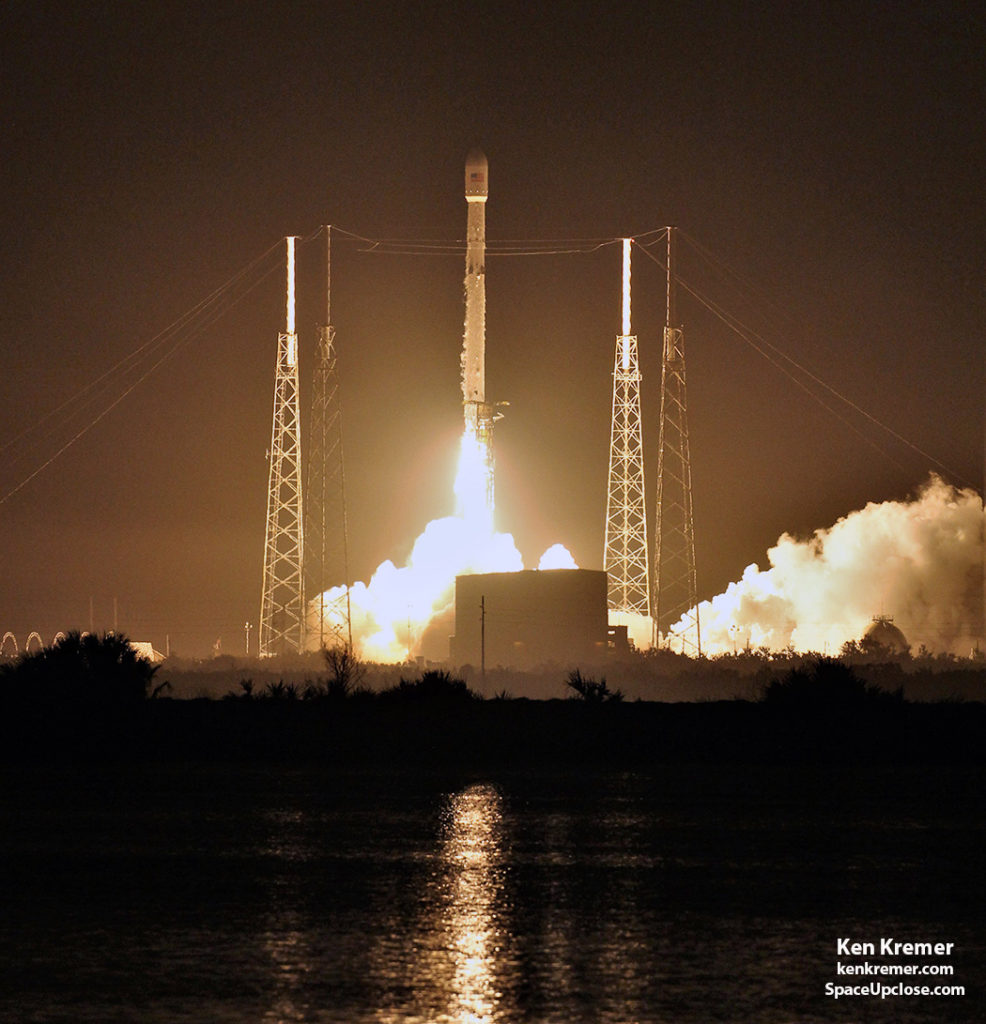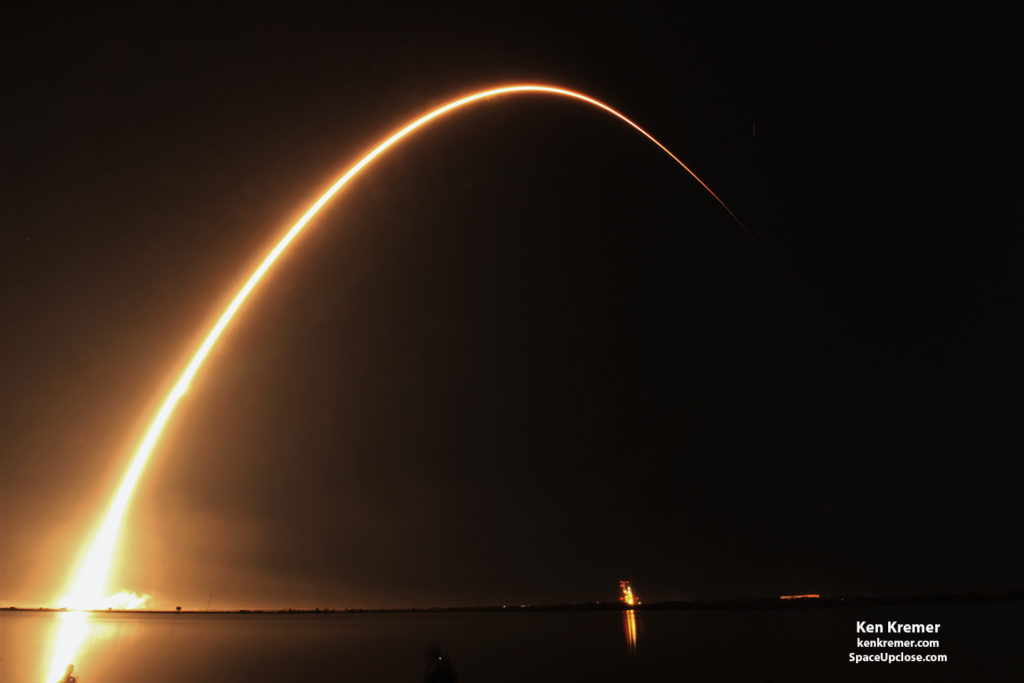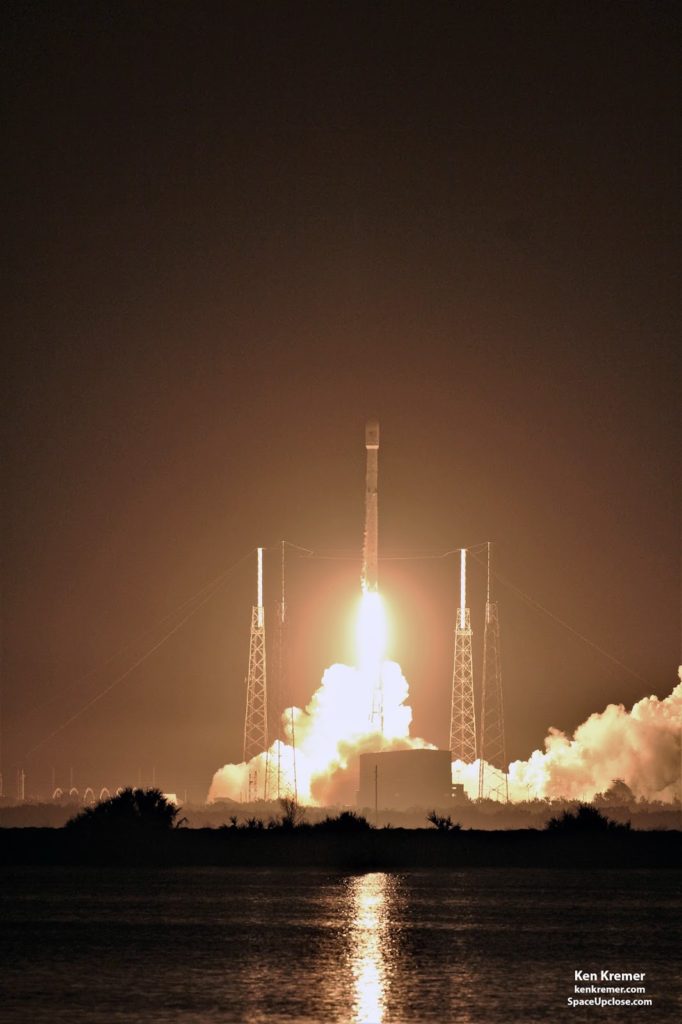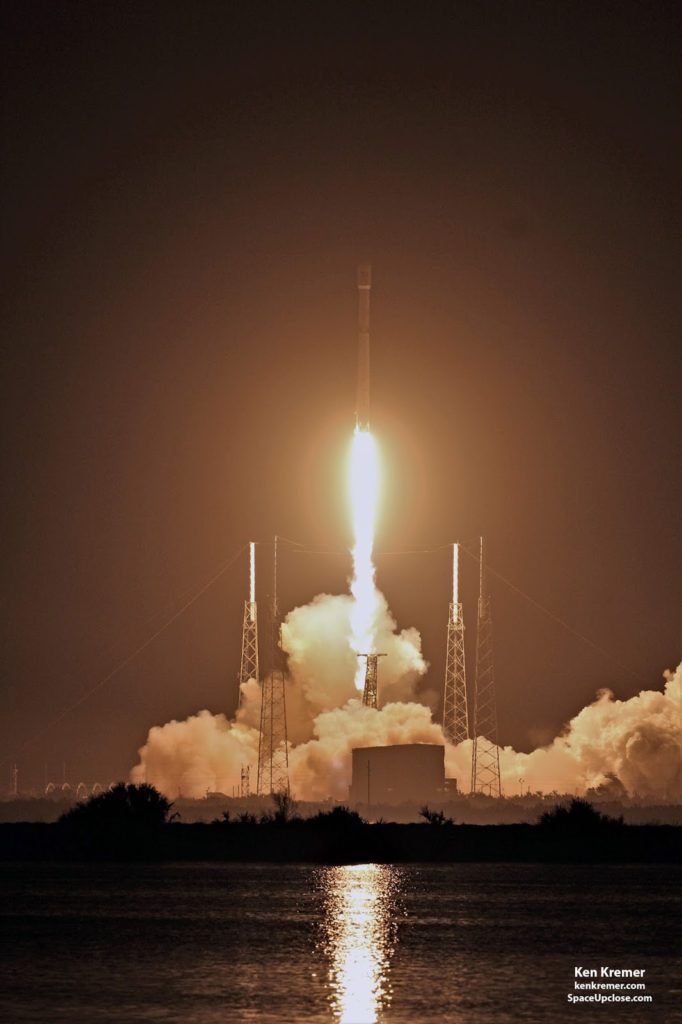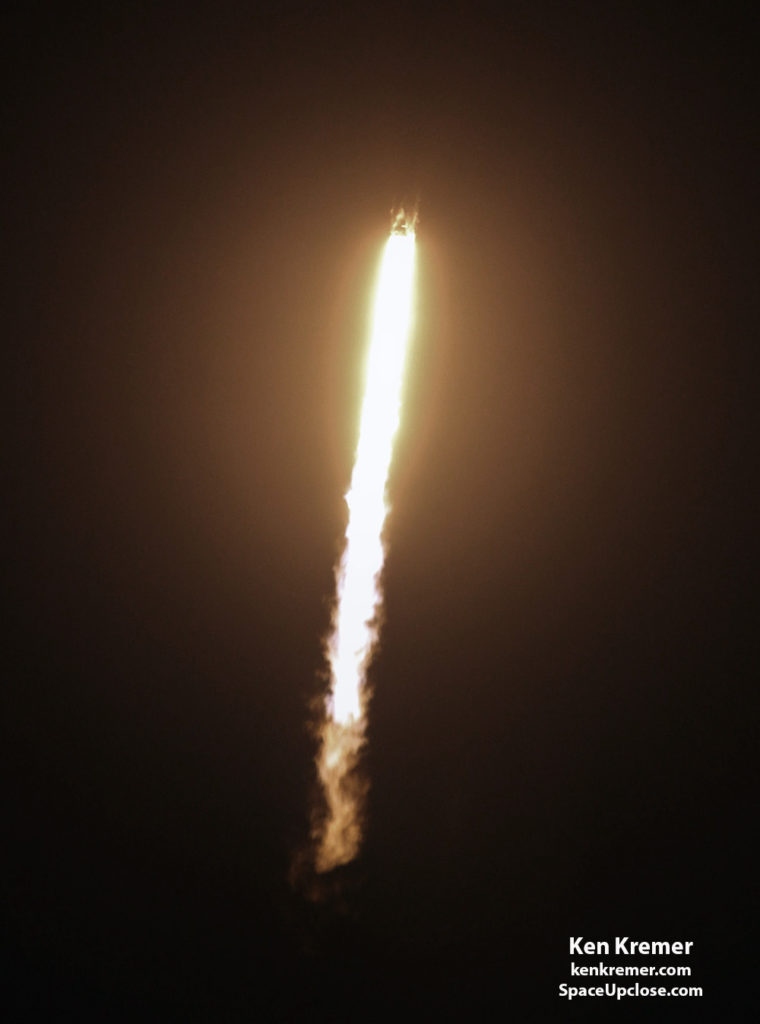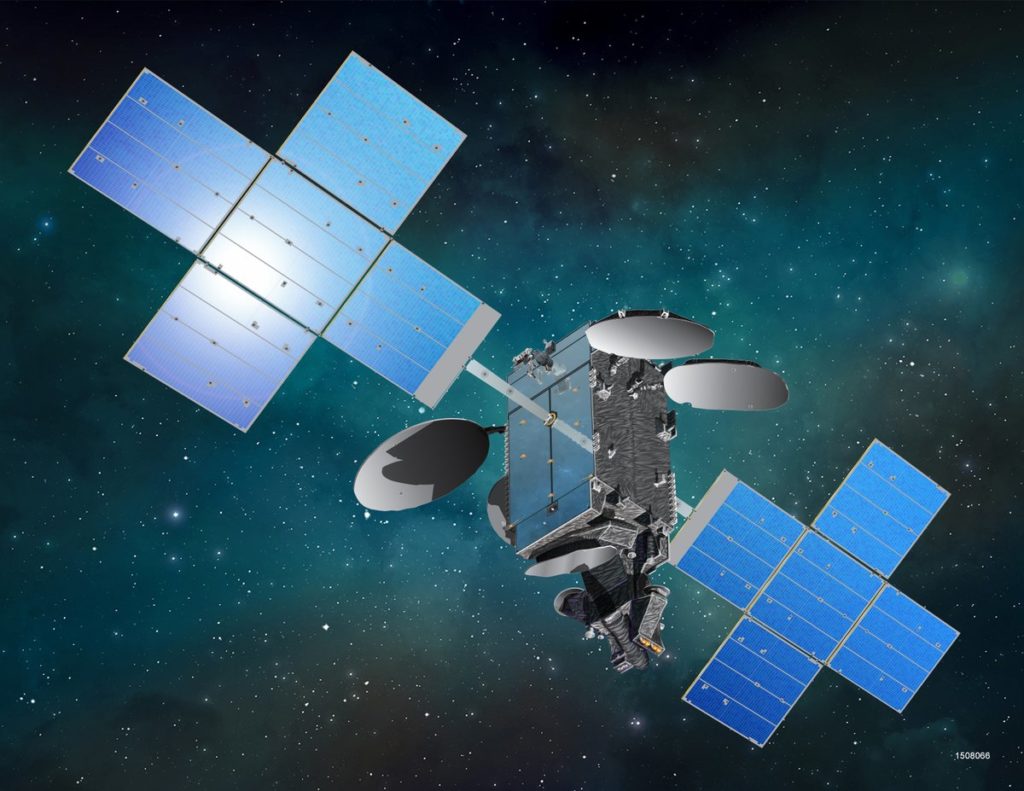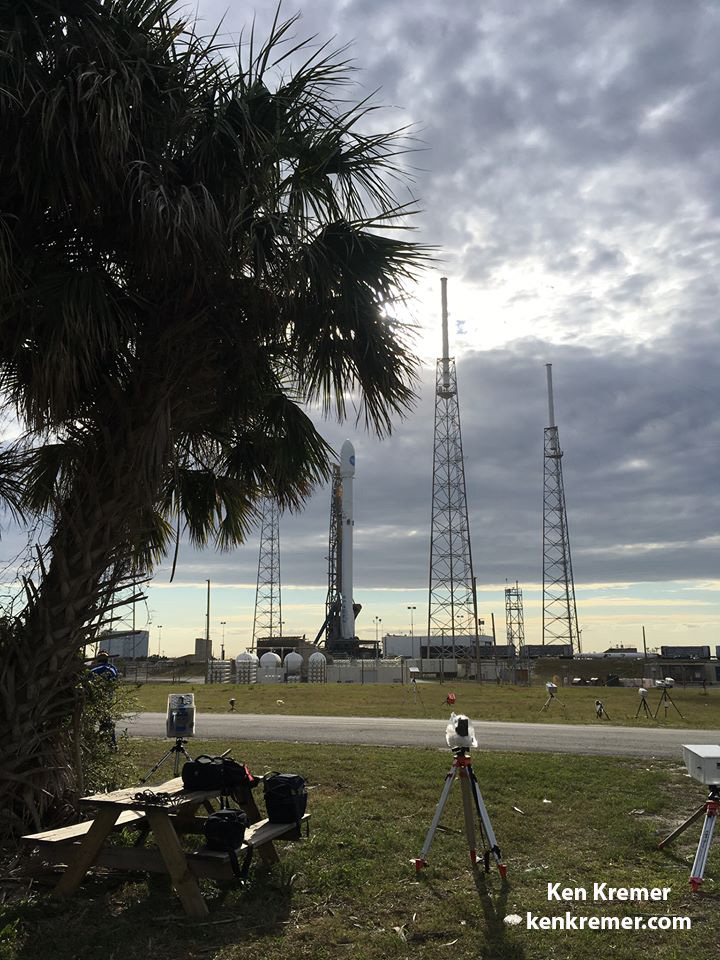FL – SpaceX launched its biggest geostationary satellite ever on the landmark 50th
mission for the firms Falcon 9 rocket with a magnificent midnight blastoff for Hispasat from the Florida
Space Coast on March 6.
SpaceX Falcon 9 rocket successfully lifted off at 12:33 a.m.
EST (533 GMT, 633 Spanish time) from seaside Space Launch Complex-40 (SLC-40) on Cape Canaveral Air
Force Station, FL, with the city bus sized 6 ton Hispasat 30W-6 communications
satellite.
offered a beautiful blastoff experience that delighted nightowl skywatchers and
space enthusiasts alike as they tracked the rockets path for more than five
minutes.
photos and videos gathered here from myself and space journalist photographers
and friends.
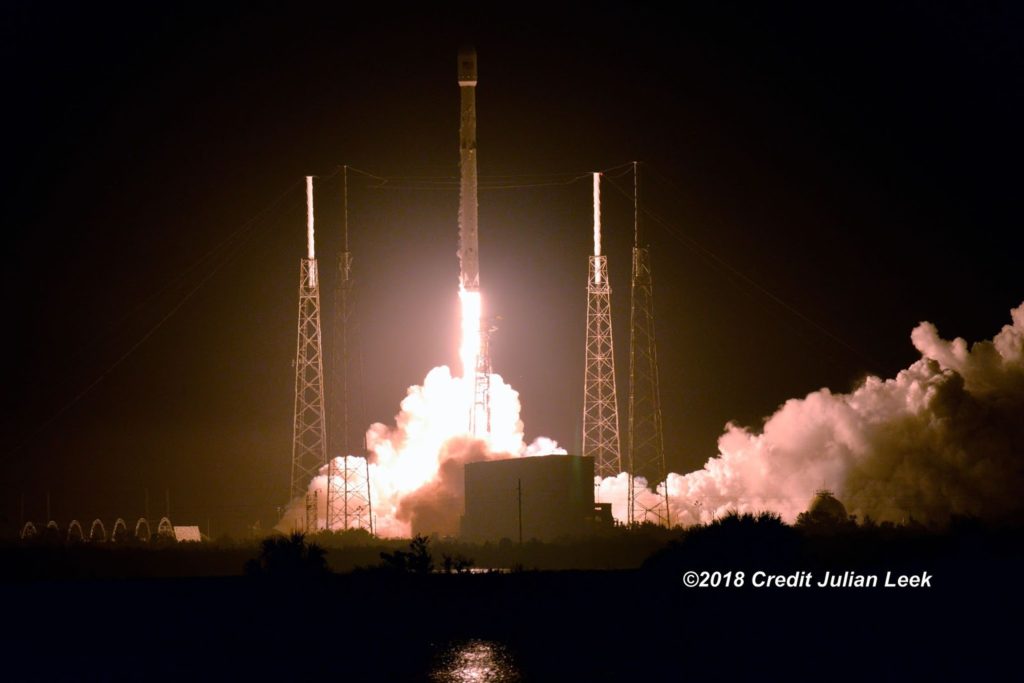 |
|
Blastoff of SpaceX Falcon 9 and Hispasat
30W-6 telecomsat from Cape Canaveral pad 40 on March 6, 2018. Credit: Julian Leek |
grows.
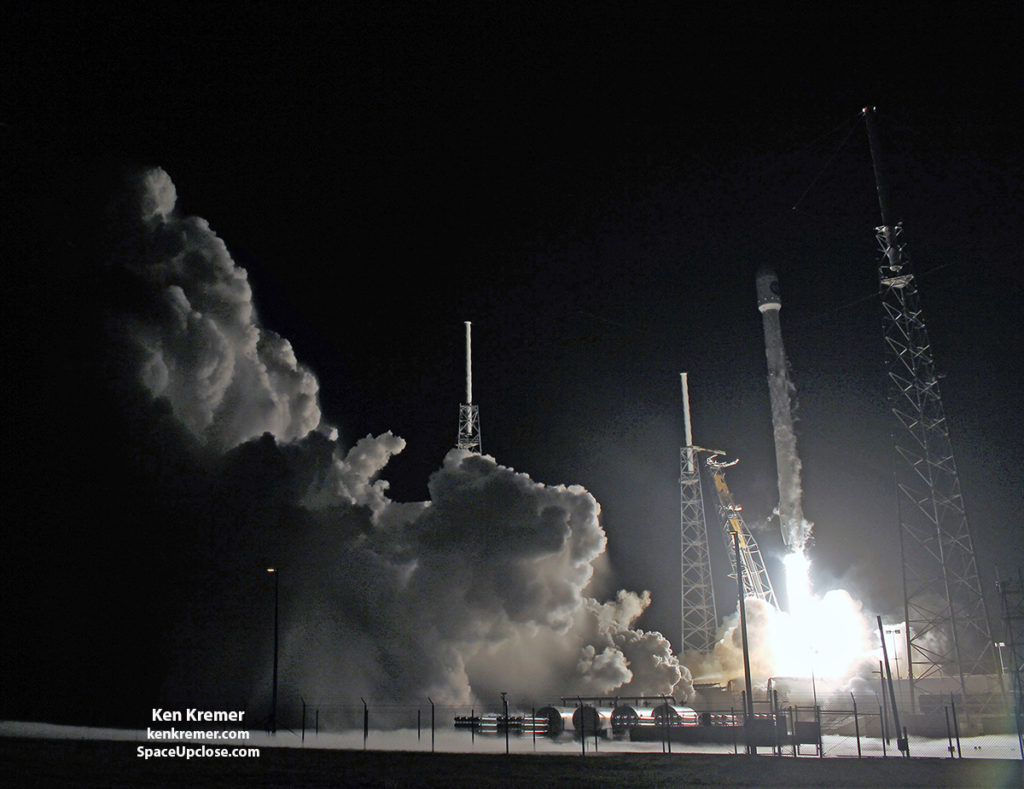 |
|
The 50th SpaceX Falcon 9 lifts off
from Space Launch Complex-40 (SLC-40) on Cape Canaveral Air Force Station, FL with the Hispasat 30W-6 telecomsat for spanish operator Hispasat at 12:33 a.m. EST on March 6, 2018. The 6 ton satellite was delivered to geostationary transfer orbit. Credit: Ken Kremer/SpaceUpClose.com/kenkremer.com |
Hispasat 30W-6 will provide high definition TV, voice, and high speed
internet broadband connectivity to Spanish and Portuguese speaking regions
across Europe, the Americas and North Africa.
video collected from video cameras ringing pad 40 at Florida’s spaceport:
Launches Hispasat 30W-6 on March 6, 2018. Credit: Jeff Seibert
rocket delivered HispaSat 30W-6 to a geosynchronous transfer orbit for HISPASAT – which is “comprised of companies that have a
presence in Spain as well as in Latin America, where its Brazilian affiliate
HISPAMAR is based.”
distribution and broadcasting of Spanish and Portuguese content, and its
satellite fleet is used by important direct-to-home television (DTH) and
high-definition television (HDTV) digital platforms, according to a company
description.
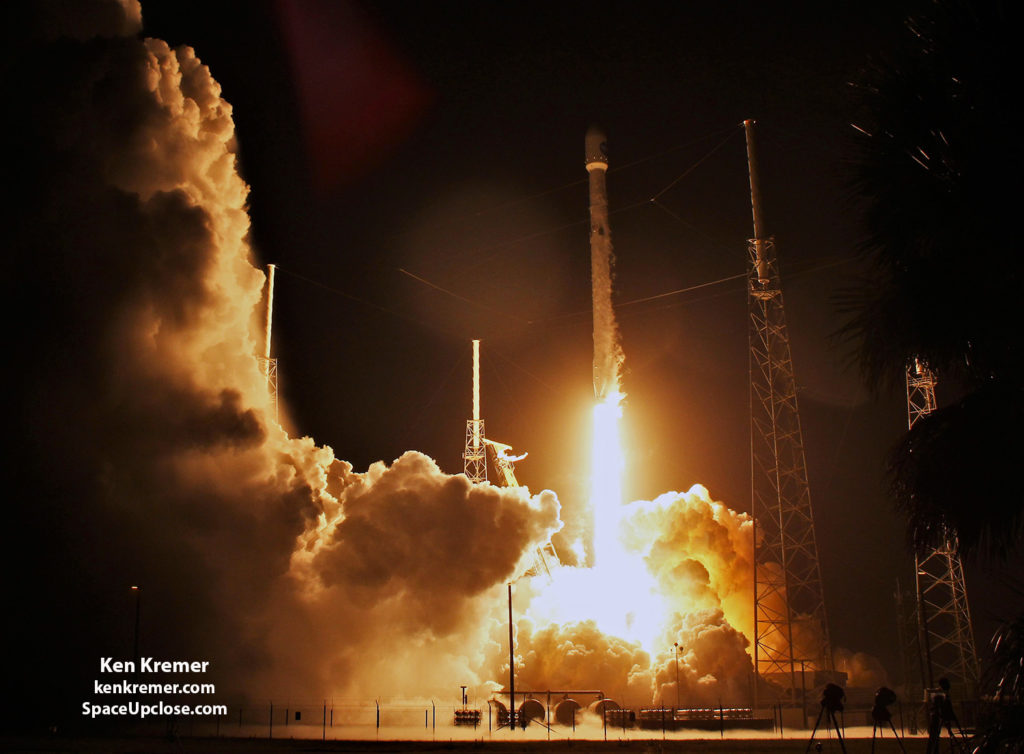 |
|
The 50th SpaceX Falcon 9 lifts off
from Space Launch Complex-40 (SLC-40) on Cape Canaveral Air Force Station, FL with the Hispasat 30W-6 telecomsat for spanish operator Hispasat at 12:33 a.m. EST on March 6, 2018. The 6 ton satellite was delivered to geostationary transfer orbit. Credit: Ken Kremer/SpaceUpClose.com/kenkremer.com |
After
reaching its initial orbit it will be moved to its final orbital position, 30º
West, where it will replace and broaden the capacity of Hispasat 30W-4.
Loral in Palo Alto (California) and involved the significant participation of
the Spanish aerospace industry.”
city bus.
transponders, 6 Ka-band beams and 10 C-band transponders.
the span of just over 4 days!
stunning dinnertime liftoff of the 20 story tall Atlas V rocket carrying the
5.5 ton GOES-S next generation weather observatory to geosynchronous orbit for
NOAA and NASA. Read out stories.
April 2 and involves a Falcon 9 launching a recycled Dragon cargo vehicle to the
International Space Station (ISS) for NASA.
ULA, Boeing, Lockheed Martin, Orbital ATK and more space and mission
reports direct from the Kennedy Space Center and Cape Canaveral Air Force
Station, Florida.
Earth and Planetary science and human spaceflight news: www.kenkremer.com –www.spaceupclose.com –
twitter @ken_kremer – ken
at kenkremer.com
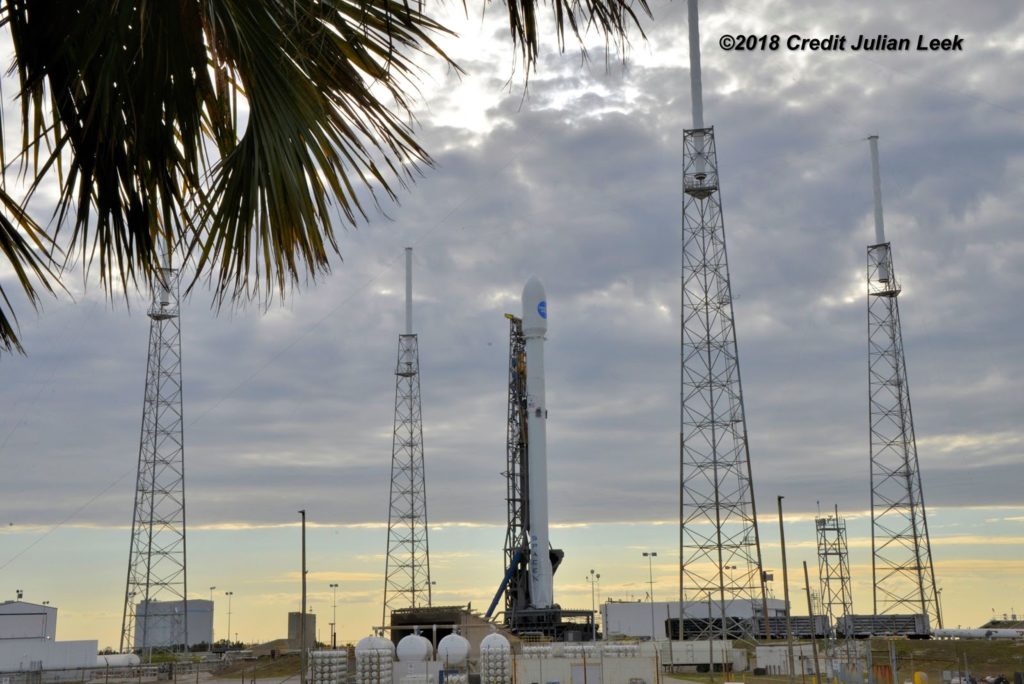 |
|
Falcon 9 carrying Hispasat 30W-6
telecomsat stands poised for launch from Cape Canaveral pad 40 on March 6, 2018. Credit: Julian Leek |


